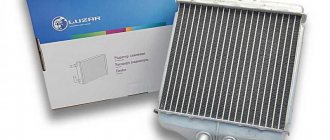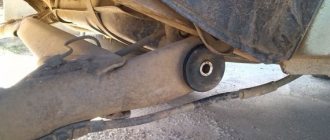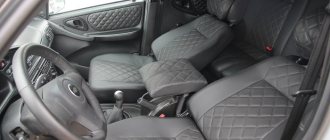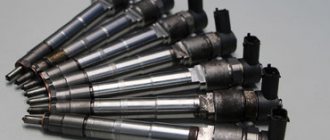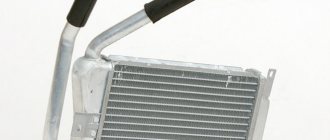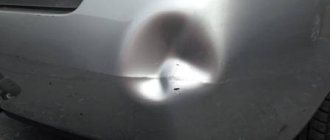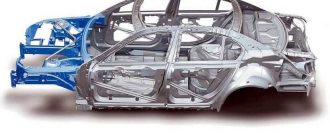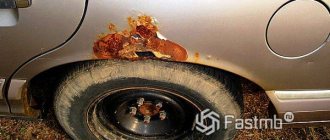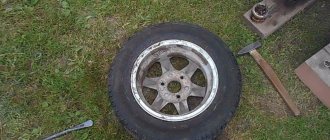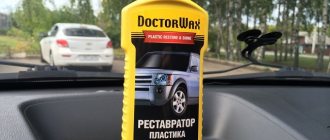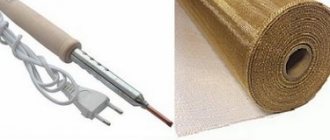Regular suspension checks are included in the main list of mandatory vehicle maintenance to prevent expensive repairs and unexpected emergency situations on the road.
This unit is seriously damaged when driving on uneven surfaces, so it is important to rely on the manufacturer’s recommendations and take into account factors that shorten the service life of the unit’s elements. Find out the cost of car suspension diagnostics online in 3 minutes Don’t waste your time - use the Uremont search and get offers from nearby services with specific prices!
Get prices
Diagnostics of vehicle chassis suspension
The unit in question eliminates the impact factor that occurs when wheels hit bumps and other irregularities. Shock absorbers soften the load on the car body. The result is a smooth ride of the vehicle. To clearly understand the mechanism, find a demonstration video.
The car suspension includes the following parts:
- shock absorbers (pneumatic, hydraulic or combined);
- elastic metal (torsion bars, springs, springs);
- stabilizing (protect the car from roll);
- guides (levers that determine the movement of spare parts among themselves);
- fastening (for connection);
- support (steering knuckles that receive and transmit the load).
Regular suspension diagnostics can prevent significant damage. Serious repair of a unit takes a lot of time and money. If the car is involved in an accident, you may need: replacement of spare parts, tow truck, body painting and other work.
Recommendations on how to check your car's suspension yourself.
The diagnostic procedure is standard and quite simple, but let’s talk about everything in order:
- First, conduct a visual inspection; the left and right parts of the suspension are assembled symmetrically, so when comparing them, pay attention to whether all the parts and fasteners are in place. If something is missing, then driving such a car is very dangerous.
- Rock the suspended wheels in the vertical and horizontal planes; there should be no knocks or play; if they are present, check whether the hub nut is tightened well. Then firmly grasp the wheel with both hands and begin to slowly turn it, while shaking it slightly. This is how the wheel bearing is checked for wear; if there is even the smallest play, or rotation occurs with wedging, the bearing needs to be replaced.
- Inspect absolutely all the anthers of the front and rear suspension, they should be intact and elastic, if you see cracks or tears, then such anther needs to be replaced as soon as possible (if this is not done soon, you will need to replace quite expensive components, such as the inner or outer CV joint etc.).
- Be sure to check the brake hoses; no cracks or leaks are allowed; if these defects are identified, urgent replacement of failed elements is required. The brakes of sloppiness do not forgive.
- Pick up a pre-prepared crowbar or pry bar and use it to check the ball joints. A little theory - the working part of the ball consists of a body, a pin and plastic liners; during operation, it is the plastic liner that wears out. Your task, using multidirectional efforts, is to understand whether there is wear or not. To check, you do not need to apply a lot of force, and there should be no backlash or knocking while rocking; if there is any backlash, the ball must be replaced.
- The next objects of our close attention are silent blocks and bushings; if they are not in order, then when driving over uneven surfaces, sharp acceleration or engine braking, a dull knock will be heard. Checking them is quite simple; first, inspect them visually for cracks and tears; there should be none. Then insert the assembly into the connection and carefully try to push the silent block. The new silent block is quite difficult to press through.
- Now we evaluate the condition of the oil seals; they are installed in the main components of the car. For example, in an engine, gearbox, gearbox or steering rack, and are responsible for retaining lubricants at the exit points of rotating or moving parts. If you see traces of oil leakage from the unit or fogging where the oil seal is installed, it needs to be replaced.
- Finally, inspect the shock absorber struts and springs. The springs must be intact and equal in number of turns on the left and right, and the struts must have intact boots and no traces of oil leakage. If their condition is suspicious, then you should undergo a check at a car service center at a specialized stand, or show the car to a qualified mechanic. Remember that worn shock absorbers can cause a serious accident when maneuvering or braking hard on uneven roads.
Free suspension diagnostics
This service is provided, for example, if the car owner is a member of a car club. Sometimes it is included in the list of mandatory warranty work. In any case, it is necessary to find out about this opportunity in advance and take advantage of such privileges.
A comprehensive check involves inspecting all components of the chassis:
- bearings;
- drums and discs;
- pads;
- shock absorbers (for leaks);
- tips;
- springs;
- clutches, etc.
When is car suspension diagnostics needed?
Check your used car before making a purchase. Always carry out a scheduled inspection - schedule a date and sign up for a service station in advance so as not to look for a technical center in an emergency. Rely on the manufacturer's recommendations.
Experienced car enthusiasts advise doing suspension diagnostics before cold weather and on the eve of a long trip.
Urgent action is needed if the following signs of a system problem appear:
- uncharacteristic “noise” when moving;
- “clanging” when turning the steering wheel;
- loss of stability (on bumps, in turns and at speed);
- car roll when braking;
- The steering wheel “steers” during acceleration.
If you doubt the results of diagnosing the suspension yourself, contact a technical center. You can order an on-site inspection, a tow truck, or simply find a suitable car service on the Uremont.com aggregator. Fill out the online application form and responses will arrive within 15 minutes.
When is the right time to change suspension springs?
- If they break (usually the break occurs in the lower or upper turns);
- Pronounced corrosion and serious cracks ;
- The height of the body has decreased significantly, the wheels “rub” against the arches .
You can fully evaluate the elasticity and possible defects of the springs when disassembling the rack. To do this, experienced craftsmen can use conventional tools (spanners and socket wrenches, hammer, screwdriver), but professionals also use a clamp - a vice to compress the coils and remove the cup. If you decide to disassemble the shock absorber strut, it will be easy to use a simple ruler to measure the degree of shrinkage of each spring compared to the factory values.
If your suspension has begun to handle bumps poorly, but you don’t yet think it’s time to change the springs, you can strengthen them with MRoad brand buffers . Buffers are interturn cushions made of polyurethane that increase the elasticity of the suspension, improve driving characteristics and prevent the body from sagging. They are inserted into the middle turns and prevent them from contracting completely, while taking part of the blow upon themselves. Motorists using MRoad buffers note improved handling, an increase in ground clearance by up to 2 cm , a smoother ride on bumps, and most importantly, the absence of breakdowns.
Front suspension diagnostics
Some faults can be identified while driving. Twist it in different directions. If the movement is unusual, there is a high probability of malfunction of the rods, guide bushings and steering tips (the last two are indicated by the presence of play).
The wheel bearing is checked “on the fly”. A loud and uniform hum indicates a problem. An alternative test for these parts requires hanging the wheels on a jack to forcefully spin the wheel and check for play.
What does “stationary” do-it-yourself front suspension diagnostics include? It starts with checking the anthers and rubber parts. Then inspect the supports, beam silent blocks, steering tips and mounting bolts. Damaged components need to be replaced. You can independently determine the malfunction by oil leaks.
It is easy to determine the condition of the springs - pay attention to the fit of the car. If it “sags,” wheel alignment is unlikely to help—you need to install new parts.
To check the ball joints, the equipment must be lifted. Next, use a mount to move the silent blocks of the levers up/down to check their movement (a sign of a problem is the presence of play). It’s easy to check the bearings - “rock” the car in a vertical (up and down) plane. If more than one oscillation “passes,” the parts are worn out.
Shock absorbers
To check this important element, perform the following steps:
- You need to rock the front of the car from top to bottom. If the shock absorbers are not worn out, then after pressing they return to their original position with virtually no rocking.
- To check the device for extraneous knocks, you need to open the hood.
With one hand you need to reach the rod, and with the other you need to swing the wing of the car. If there is a knocking sound during the swinging process, this may indicate a malfunction of the shock absorber itself or the support bearing. - In addition, the malfunction of a particular shock absorber can be determined by characteristic oil leaks on the body. To do this, you can simply look under the wheel arch. This is often how you can see traces of oil.
Car rear suspension diagnostics
“Inappropriate” rocking of the car and the appearance of extraneous sounds indicating a problem can be determined while driving. Use a rough road for the test. If signs of a chassis malfunction appeared before purchasing a used car, refuse the deal.
Where to do suspension diagnostics? As we wrote above, this can be done in “field” conditions (on the move or even at speed). Car service centers use vibration stands for testing. This equipment has a swinging platform with sensors connected to it that transmit test results to a computer. A special program allows you to compare real measurements with standard values and identify deviations. Such a check is possible only if the car has an electronic control system.
Suspension design features
Structurally, car suspensions can vary significantly, depending on the class of car and the specific manufacturer. The most widely used today is an independent front suspension, made of the McPherson type, as well as a semi-independent one at the rear beam. This design provides good handling, while at the same time increasing the reliability of the car and providing comfort even when driving on broken roads.
Some cars today use air suspension, which provides the highest possible comfort on board. At the same time, the design of such a suspension is extremely complex; often, if it fails, expensive repairs are required, and the costs of restoring the car can shock even a wealthy car owner.
Suspension diagnostics and repair - advice from experienced car owners
It is better to carry out a preventive check every 10 thousand km (or twice a year). It is optimal to do this in the fall/spring and before a long trip. Before purchasing a used car, check the technical condition of the suspension before completing the transaction. Don’t forget to also find out the following information about the vehicle in advance:
- whether it is listed as stolen;
- whether you were involved in an accident;
- Was it used as a taxi, etc.
How to check suspension springs yourself
06/24/2018 admin Comments No comments
There is a saying: forewarned is forearmed. It is always better to know about problems with your car from the beginning than to guess. If you suspect that the springs need to be changed, it is better to know the degree of wear in advance , so that in the event of a breakdown you do not have to urgently look for funds for repairs. Therefore, it is important to know how to check the suspension springs yourself. This will help you save on diagnostics, and is also useful when buying a used car, because you do not yet know the “norm” of the suspension condition for a given brand.
